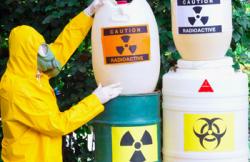🚨 Why Hazmat Freight Shipments Require Special Handling
Hazmat freight shipments must follow strict safety rules. These materials can be flammable, toxic, or explosive. Mishandling them puts lives at risk. That’s why hazmat freight shipping requires proper documentation, labeling, and trained drivers. Understanding these rules helps protect your team, your cargo, and the public.
📄 The Importance of MSDS Documentation
Every hazmat shipment must include a Material Safety Data Sheet (MSDS). This document provides key details about the substance. It includes the UN number, division, and hazard group. Carriers use this data to determine how to handle the shipment safely. Without it, your freight may be delayed or rejected.
🔢 What Is a UN Number?
The UN number is a four-digit code that identifies hazardous materials. It helps carriers classify and label the shipment correctly. For example, the same chemical in liquid and solid form may have different UN numbers. Accurate labeling prevents accidents and ensures compliance with DOT regulations.
🏷️ Labeling and Driver Requirements
Hazmat shipments must be labeled clearly. Drivers must have a hazmat endorsement on their license. This ensures they’re trained to handle dangerous goods. DOT rules require proper handling procedures to avoid accidents. Safety is the top priority when transporting hazardous freight.
🧾 Documentation That Saves Lives
Proper documentation isn’t just a formality—it’s critical in emergencies. Firefighters need to know what’s inside a truck before responding. Is it flammable? Is it explosive? Quick access to this info can save lives. That’s why hazmat paperwork must be complete and accurate.





